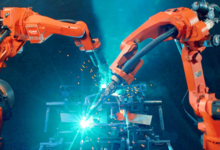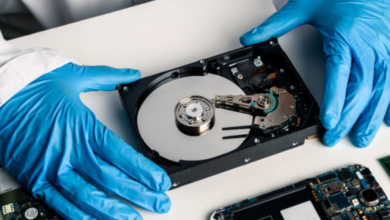Learning Heat Sinks: What is a Heat Sink?

Heat sinks are essential components that prevent electronics like computers and gaming consoles from overheating and crashing. They keep devices cool and running smoothly, making them a key part of reliable performance.
This blog explores the importance of heat sinks in thermal management, explaining what is a heat sink, how they work, and why they’re essential for keeping everything from laptops to industrial machines cool and performing at their best.
What is a Heat Sink?
A heat sink is a simple piece, usually made of metal like aluminum or copper, that helps cool down electronic parts. It takes heat away from hot parts like the CPU, GPU, or LED and lets that heat escape into the air or liquid around it. This keeps the device from getting too hot.
Without a heat sink, parts can overheat, which might make the device slow down, stop working, or break. Heat sinks keep things cool so your electronics work properly, last longer, and stay safe. A heat sink is a small but important part that protects devices from too much heat.
How a Heat Sink Works to Cool Electronics
A heat sink cools electronic components by transferring heat away using three main methods:
- Conduction – Heat moves from the hot component (like a CPU) into the heat sink through direct contact, thanks to metals like aluminum or copper.
- Convection – The heat is then transferred to the surrounding air:
- Natural convection happens as warm air rises and cooler air replaces it.
- Forced convection uses fans to speed up airflow for better cooling.
- Radiation – A smaller portion of heat is released as infrared energy.
A heat sink absorbs heat from components and releases it into the air, keeping electronics cool and working properly.
Key Components of a Heat Sink
- Base Plate
The base plate is the flat part that touches the hot component (like a CPU). It absorbs heat and passes it into the heat sink.
- Materials: Usually made from copper or aluminum because they conduct heat well.
- Important: It should be smooth and flat so it can touch the hot part properly and transfer heat more easily and effectively.
- Fins
Fins are thin, flat pieces attached to the heat sink. They give it more surface area, which means more space for heat to escape into the air, helping the device cool down faster.
- Design: Fins can be straight, wavy, or shaped differently to help air flow better and cool more effectively.
- Materials: Typically aluminum or copper.
- Efficiency depends on: How thick the fins are, how far apart they are, their direction, and how air moves around them.
- Heat Pipes (in advanced heat sinks)
Heat pipes help move heat quickly from the bottom of the heat sink to the top. They have a special liquid inside that turns into vapor when it gets hot. The vapor travels to a cooler part, turns back into liquid, and releases the heat. This process keeps repeating to spread heat faster and more evenly.
- Materials: Usually copper pipes with water inside for cooling.
- Used in: High-performance gadgets like gaming PCs, servers, and some smartphones.
- Other Parts
- Thermal Interface Material (TIM): This is a special paste or soft pad placed between a hot part (like a CPU) and the heat sink. It fills tiny gaps so heat can move more easily from the part to the heat sink, helping it cool better.
- Mounting Hardware: Screws, clips, or brackets that hold the heat sink firmly in place, ensuring good contact.
Knowing how these parts work together helps you pick or design a heat sink that cools effectively and keeps your devices running smoothly.
Types of Heat Sinks
- Passive Heat Sinks
Use natural airflow (no fans) to cool by spreading heat through fins and the base plate.
Pros:
- No moving parts → very reliable.
- Completely silent.
- Uses no extra power.
Cons:
- Not suitable for high-performance components.
- Better cooling performance requires a larger heat sink.
Used in: Low-power devices and places where quiet operation matters.
- Active Heat Sinks
Add fans or blowers to push air over the heat sink for better cooling.
Pros:
- Cools more efficiently than passive sinks.
- Enhanced cooling from airflow lets the heat sink be more compact.
Cons:
- Fans make noise.
- Use more electricity.
Used in: High-performance systems like gaming PCs and servers.
- Liquid-Cooled Heat Sinks
Use liquid coolant circulated by pumps to carry heat away from components.
Pros:
- Very efficient cooling.
- Great for overclocked or super-powerful systems.
Cons:
- More complex setup and maintenance.
- Risk of leaks.
- More expensive.
Used in: High-end gaming rigs, workstations, and data centers.
Materials Used in Heat Sinks
- Aluminum
Aluminum is one of the most commonly used materials in heat sinks due to its excellent balance of thermal performance, cost, and manufacturability.
Advantages:
- Lightweight (density ~2.7 g/cm³), great for portable devices.
- Affordable and cost-effective.
- Naturally resistant to corrosion (forms a protective oxide layer).
- Easy to shape and manufacture (extrude, cast, machine).
Common Types:
- 6063: Easy to extrude, smooth finish.
- 6061: Strong and durable.
- 6082: Very strong and corrosion-resistant.
- Copper
Copper is a high-performance material widely used in heat sinks where maximum thermal conductivity is essential.
Advantages:
- Excellent at transferring heat, best for high-performance cooling.
- Very durable and corrosion-resistant.
Disadvantages:
- Heavy (density ~8.96 g/cm³), which can be a problem in weight-sensitive designs.
- More expensive than aluminum.
- More difficult to cut, shape, or manufacture.
- Composite Materials
Combine materials, like aluminum bases with copper fins, to get the best of both worlds.
Advantages:
- Balanced thermal performance, weight, and cost.
- Can be customized for specific cooling needs.
Used In: Powerful electronics and high-performance systems where basic cooling materials don’t work well enough.
When choosing a heat sink material, consider how much heat needs to be managed, how much weight you can allow, your budget, and the device’s specific requirements.
Signs Your Heat Sink Might Be Failing
- CPU Overheating
If your computer slows down, shuts off, or the CPU reduces its speed, it may be due to a failing heat sink. Constantly high CPU temperatures are a key warning sign.
- Strange Fan Noises
If you hear grinding, rattling, or loud sounds from your computer fan, it could be struggling or starting to fail. Since the fan helps the heat sink keep the CPU cool, a bad fan can lead to poor cooling and overheating.
- Physical Damage
Inspect the heat sink for bent, broken, or rusty parts, as this damage can reduce cooling efficiency by blocking airflow and preventing proper heat release.
- Frequent Crashes or Shutdowns
If your computer freezes or shuts down often without warning, overheating caused by a failing heat sink could be the reason. The system does this to protect the CPU from heat damage.
- Old or Degraded Thermal Paste
Thermal paste sits between the CPU and heat sink to help transfer heat. Over time, it dries out and becomes less effective. This causes higher CPU temperatures and worse cooling.
Don’t ignore heat sink issues such as regular cleaning, fresh thermal paste, and good airflow help keep your computer cool, working properly, and lasting longer.






